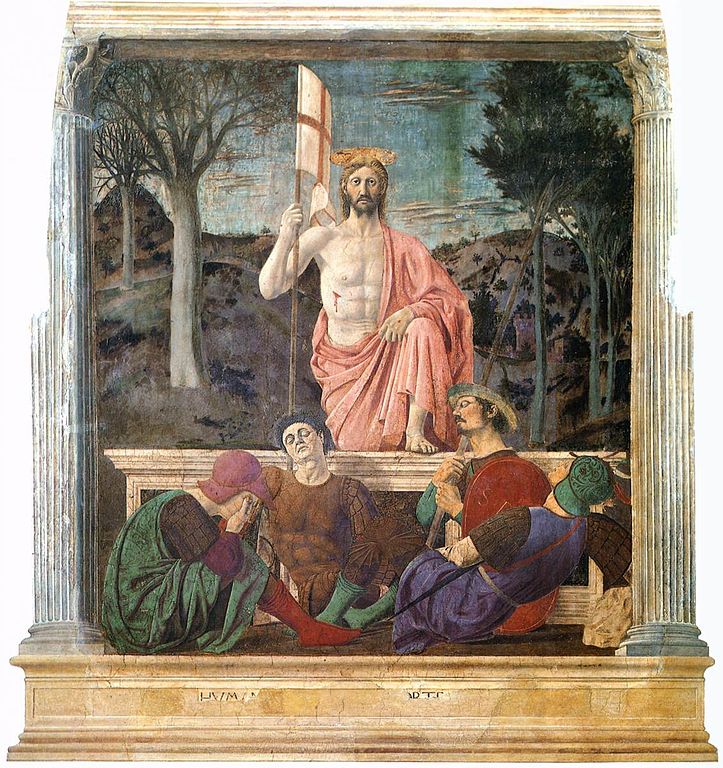
Wikimedia Commons public domain image
One suggestion that has been offered to explain the claim of Christ’s resurrection — this was actually a popular theory among nineteenth-century skeptics and still has advocates today — holds that, although grievously wounded upon the cross, Jesus didn’t actually die. Instead, he swooned. People thought he was dead, though, and he was taken and buried. However, the spices and aromatic oils awakened him after he had been left in the tomb. So he revived.
Now, this strikes me as implausible, for one thing, because Roman soldiers were apparently quite experienced at crucifixions. They were good at it, and they took pride in their work. Moreover, according to the New Testament, the injuries that Jesus sustained in connection with his “failed” execution were extremely serious — first of all, scourging that may well have laid open his back all the way to the spine, large spikes or nails driven through his hands and his feet, a very serious crown of thorns crushed down onto his head, and a spear thrust into his side. (Of course, if we choose to ignore the New Testament accounts, the sky’s the limit. Maybe he was simply tickled by playful Roman legionaries and then set free!)
Crucifixion didn’t typically kill through loss of blood. Victims of crucifixion suffocated as they tried to lift themselves in order to breathe, putting their weight on the spikes through their feet or ankles, scraping their scourged and bloody backs upon the upright beam of the cross.
But let’s pretend that, somehow, Jesus survived all of that, and now, stimulated by the aromatic herbs that were used to prepare his body for burial during the late afternoon or early evening of Friday, he has awakened inside the tomb.
He’s tightly wrapped in burial linens. He has painful gashes on his head and deep, major, piercing wounds in his hands and/or his wrists, his feet or his ankles, and his side. He has lost a very great deal of blood. But he manages somehow to unwrap himself, and to get up from the slab on which his body had been placed. He folds the burial clothes very neatly.
Now he rolls away the stone that is at the opening of the tomb and overcomes the guard stationed outside. He staggers into Jerusalem on his grievously wounded feet, entering unseen and pausing every few seconds to lean against the walls of the densely packed Old City. He arrives at the so-called “upper room” sometime fairly late on Sunday morning.
When the apostles see him, they immediately conclude that he has risen gloriously from the dead and exclaim “Hallelujah!” They resolve to dedicate their lives to him, even at the risk of martyrdom.
(Somewhere during this time, he also hobbles along on the road to Emmaus, about twelve kilometers from Jerusalem, with two disciples who never seem to have noticed his gravely crippled condition.)
I dunno. Somehow it just doesn’t ring true to me.











